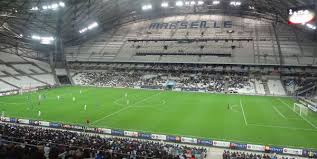j34 backpack

Can anyone tell me whether there are libraries for D1 that support LCD displays? I am specifically looking for libraries to control the common 2 and 4-line LCD displays interfaced using I2C. I have a Nokia 5110 graphic lcd working, using PCD8544 chip, running at 3.3V. /wemos/D1_mini_Examples once it's a bit more polished. Most 16x2 and 20x4 LCDs are 5V, so you'll need some level conversion. I have seen some 3.3V I2C 128x64 and 128x32 OLED displays on AliExpress. Arduino example code should be compatible with the D1/D1 mini, if not, share some code and we'll have a look. Pick LiquidCrystal_v1.2.1 (yes, the "old" version!) SDA to I/O-pin (no level conversion required) SCL to I/O-pin (no level conversion required) Define SDA and SCA I/O-pins e.g.// pin SDA, pin SCL I have a SPI 128x64 OLED working too. It has a SSD1306 and the Adafruit SSD1306 library works well with it. It's a cheap OLED and has incorrect silkscreen pin labels.

I thought it was I2C, but it's actually SPI. A quad 7-segment uses a lot of pins. You'll need an IC to drive them with as little as 2 pins (eg. TM1637, MAX6958, MAX6959, MAX7219). Maybe one of these quad 7-seg: Or one of these dual quad 7-seg: There is also 14 segment LEDs, which require even more pins or an I2C/SPI IC. Another option is 16x2 or 1602 displays. 16 columns, 2 rows. As with the quad 7-segments, it requires a lot of IO pins. You can get I2C backpacks which need only 2 data pins, such as the one that comes with this: Lots of options available. Pick one that suits your budget and we'll get a working example. I have 3x more LCDs working now. Green backlight 1602 HD44780 compatible LCD with PCF8574T I2C backpack Blue backlight 1602 HD44780 compatible LCD with PCF8574T I2C backpack Green backlight 2004 HD44780 compatible LCD with PCF8574T I2C backpack I'll make a pull request with a bunch of useful examples shortly.

Based on yoda said (including library and tutorial) well its very easy Wemos to LCD 16x2 I2C wiring pin D3 on wemos connect to SCL on LCD 16x2 I2C pin D4 on wemos connect to SDA on LCD 16x2 I2C please see the script below LiquidCrystal_I2C lcd(0x27, 2, 1, 0, 4, 5, 6, 7, 3, POSITIVE); // Set the LCD I2C address// Used to type in characters// initialize the lcd for 16 chars 2 lines, turn on backlight//Start at character 4 on line 0
sniper backpack 8fields If anyone struggles with tuning LCD over I2C, try i2cLCDguesser.
campus backpack ziggy zinniaIt works on my WeMos D1 R2 with minor adjustments, and helped me to discover "schematics" of the I2C-adapter (based on PCF8574T) for my LCD (HD44780, bought on AliExpress)
backpack festive smg
If the sketch makes your board reboot constantly without sending anything to serial, reorder its code in setup(): Serial.println(" - Guess constructor for i2c LCD backpack");// this line should NOT go first for some reason... I'm able to control backlight for LCD, and symbols became visible after I adjusted the contrast with the potentimeter on I2C-adapter (refer to Serial I2C 1602 16×2 Character LCD Module). Tested on LCD 16x2 and 20x4 + i2c Module with this library based on DFROBOT's library!
raychel backpack And make shore that you supply 5V for the LCD i2c module otherwise only the backlight will work nothing else!
backpack electrofisher rental Don't worry about 5v vs 3.3v!
fisher price ripstop diaper backpack
Yeah, with ESP8266 Core for Arduino IDE, it's preety simple using the LiquidCrystal_I2C library. But, what I want to know how to do is to make common 1602 and 2004 LCD displays work on a NodeMCU running Lua. There seems to be a couple Lua library modules up on GitHub, but I have not had any success in getting either of this to work. The two leads on GitHub were: If anyone has figured out how to make either of these work under Lua, please let me know how you did it!Club: Olympique de Marseille | Stade Velodrome was built to serve as a playing venue for the 1938 World Cup. Soon after it became the new home of Olympique de Marseille after Stade de l’Huveaune had become too small for the club. Stade Velodrome officially opened on the 13 June 1937 with a friendly match between Marseille and Italian side Torino. During the 1938 World Cup, the stadium hosted one first round match and the semi-final between Italy and Brazil (2-1). The stadium initially had a cycling as well as a running track circling the pitch.

It was bowl-shaped and both long sides had cover. The stadium remained largely unchanged for the following decades, though the tracks got gradually eaten away by the extension of the stands. Stade Velodrome received a first refurbishment in preparation of the Euro 1984 Championships, during which it hosted one first round group match and the semi-final match between France and Portugal (3-2). The stadium was almost completely rebuilt for the 1998 World Cup, and it was then when the stadium got its characteristic round-shaped stands. Capacity got increased to about 60,000 seats, though the new stadium was also criticised for its lack of cover. During the World Cup, Stade Velodrome hosted four first round group matches, a round of 16 match, a quarter-final, and the semi-final between Brazil and Holland (1-1). New redevelopment plans were presented following France being awarded the Euro 2016 tournament. Works included the almost complete reconstruction of the two principal stands, minor works on the stands at both ends, and the construction of a roof that would cover the complete stadium, hereby increasing capacity with another 7,000 seats.

The redevelopment was completed in the summer of 2014. During Euro 2016, Stade Velodrome will host four first round group matches, of which one of the French national team, a quarter-final, and one of the two semi-finals. (photos of the present Stade Velodrome below) Stade Velodrome is located in the south of the city of Marseille, about 3.5 kilometres from Marseille’s city centre and a kilometre more from central railway station Saint-Charles. One can get to the stadium with metro line 2. Catch the metro southbound at Saint-Charles railway station or another stop in the city centre (e.g. Noailles), and get off at either Rond-Point du Prado or Sainte Marguerite Dromel (both located at different sides of Stade Vélodrome). If coming from the old port area, you can catch metro line 1 and change at station Castellane to line 2. You can find a metro network map here. If it also possible to just walk from the old port area to Stade Velodrome, which will take 30-45 minutes.

Find your way to the Rue de Rome, a few blocks inland, and turn south. The Rue de Rome turns into the wide Avenue de Prado, which brings you in one line to the stadium. It is a pleasant walk. Address: 3 Boulevard Michelet, 13008 Marseille Stade Velodrome is located in a rather well-off residential area. There are a several eating and drinking options around, most of all on the Avenue du Prado in the direction of the city centre. In the city centre the old port area (Vieux Port) is the place to eat and drink. There is a reasonable amount of hotels in the vicinity of Stade Velodrome. The Mercure Marseille Prado, Inter-Hotel Parc des Expositions, and Citadines Prado Chanot Marseille all get good reviews and are only 5 to 10 minutes walking from the stadium. Hotel Le Huitième is a more budget alternative. The Novotel on Avenue du Prado is a little further away but still an easy walk, while closer to the centre. If you wish to stay close to the coast (and beach), the Residence Adagio Prado Plage may be of interest to you.

Most will decide to stay in the old port area though, or a bit further south near Castellane with both the stadium and city centre at walking distance. Click here for all hotels near Stade Velodrome, and here to explore further options in Marseille’s city centre. Tickets for Marseille games can be purchased online (the official website operates through Digitick), at the ticket office at the stadium, or at the OM official store at 31 Rue St Ferréol in the city centre. They can furthermore be bought at any of the Francebillet, Ticketnet, or Digitick sales outlets. Ticket prices can depend on the match, but expect to pay between €20.00 and €55.00 for a seat at one of the sides. There is usually limited availability to buy tickets for a seat behind the goal. Prices for high-profile games tend to be somewhat higher, but tickets for low profile matches such as the Europa League can go for much cheaper. For more information call +33 (0) 892 700 840. The Marseille tourist office organises guided stadium tours that include access to the dressing rooms, the press room, stands, and players’ tunnel.